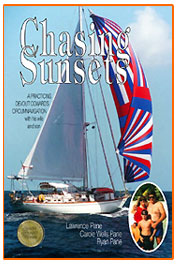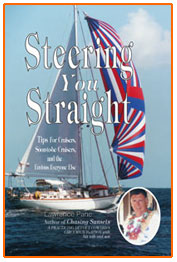Anchoring Etiquette
Thursday, July 31st, 2008There is an etiquette to anchoring. Vessels already at anchor have precedence, so the place you choose has to be clear of them. Do not be like the yacht that anchored right on top of us, and when I indicated that we would hit, responded, “Don’t worry, we will put out fenders.”
If the boats in the anchorage have dropped a stern anchor, you must also. Do not be the only boat without a stern anchor, or the only boat with one. Yachts with all-chain rode will swing differently from those with rope; ketches will be different from sloops; full keels are different from fin. It is polite to ask the boats nearest you how much rode they have out, and what type, as this will, in part, determine how they will swing.
We discovered a delightful little bay in Southern Spain, with room for about five boats, dropped anchor all alone, went below for a nap, and came back on deck to find we were in the middle of about 20 charter boats. They had limited knowledge of scope, apparently believing that, as long as the anchor was on the bottom, all would be well. Thankfully it was a low wind night, and creative fendering got us through without damage. Up-anchoring was not an option as we had at least three anchors on top of ours.




